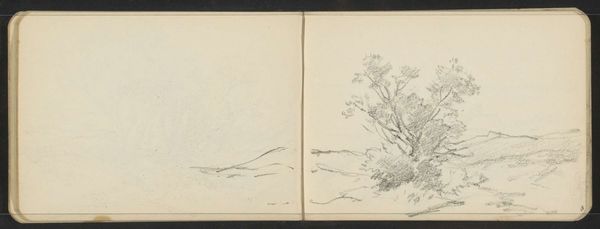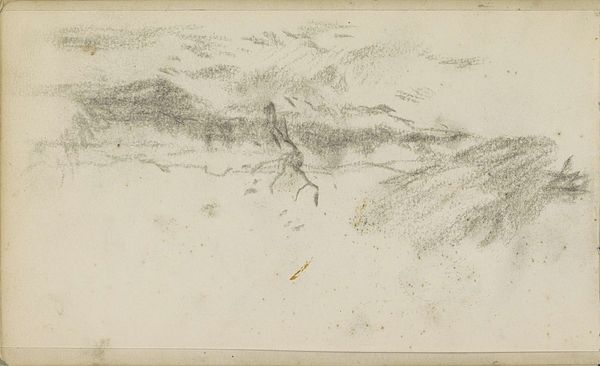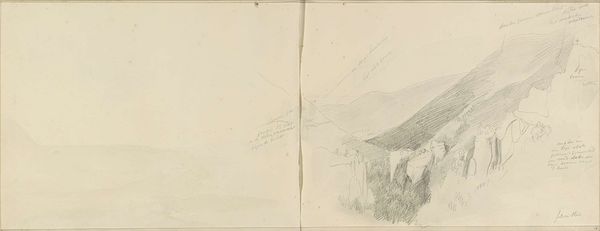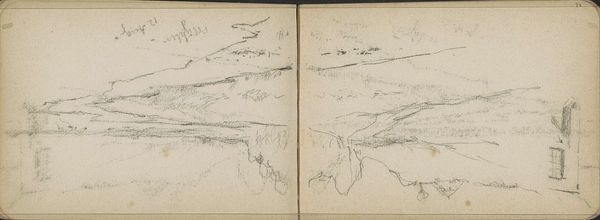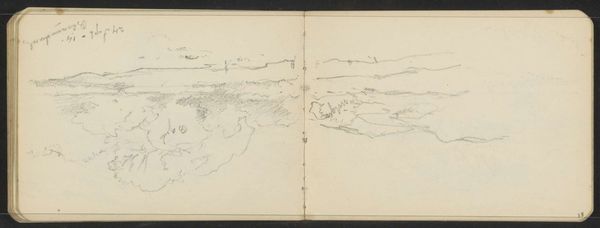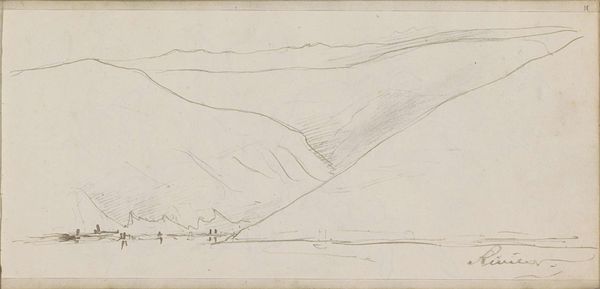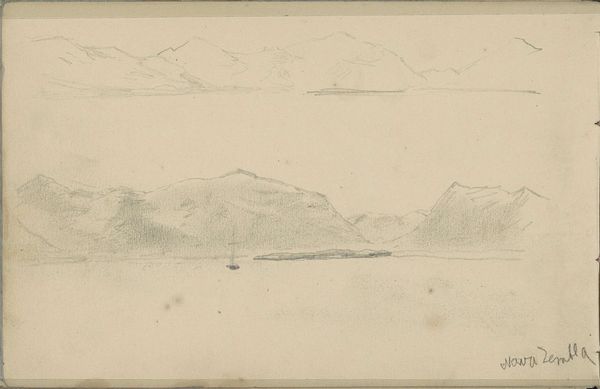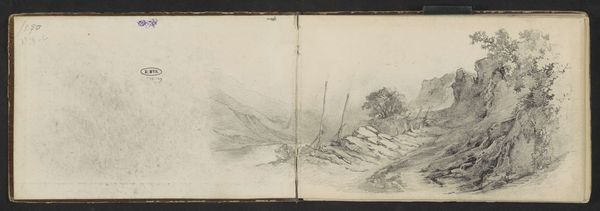
#
light pencil work
#
incomplete sketchy
#
personal sketchbook
#
ink drawing experimentation
#
pen-ink sketch
#
sketchbook drawing
#
watercolour bleed
#
watercolour illustration
#
sketchbook art
#
watercolor
Copyright: Rijks Museum: Open Domain
Curator: Here we have a spread from a sketchbook, "Achterzijde van het Marienthal bij Eisenach," created around 1840 by Johannes Tavenraat. It's currently held in the Rijksmuseum. Editor: It feels unfinished, like a fleeting impression captured in soft pencil strokes. There's a rawness, a certain vulnerability to the lines. Curator: I find the perspective particularly interesting. Notice how the scene unfolds almost like a diptych, one side revealing a more distant, atmospheric landscape, while the other zeroes in on what appears to be a closer rock formation and maybe some exposed tree roots? This duality suggests an engagement with contrasting viewpoints, a visual negotiation of near and far. We need to ask, for whom, at the time, would such scenes be compelling to represent? Editor: I'm drawn to the recurring motif of the natural arch or bridge hinted at in the root structure, repeated also by implied mountain paths on the left side. In many traditions, these thresholds symbolize passages, transitions from one state to another. It lends the piece a subtle symbolic charge beyond its seeming simplicity. What journey, physical or spiritual, did Tavenraat hope to trace? Curator: Given that this comes from a sketchbook, I see it as a deliberate meditation on space and place. Remember, the Romantic era emphasized the individual's subjective experience of nature. A piece like this can allow us to enter into that sensibility, especially if we consider what types of personal and class privilege granted certain individuals access to “nature” as a resource or creative respite. Editor: I agree. The incompleteness encourages us to complete the narrative, to project our own experiences onto it, to ponder our own thresholds. There is something timeless to such an offering. Curator: Precisely. It pushes us to examine how power dynamics affect who even has the freedom to reflect on beauty. Editor: Well, it offers much more than just scenic representation. Curator: Absolutely. It shows that images are not merely passive reflections. They reflect systems of privilege that enable even quiet personal reflections.
Comments
No comments
Be the first to comment and join the conversation on the ultimate creative platform.

